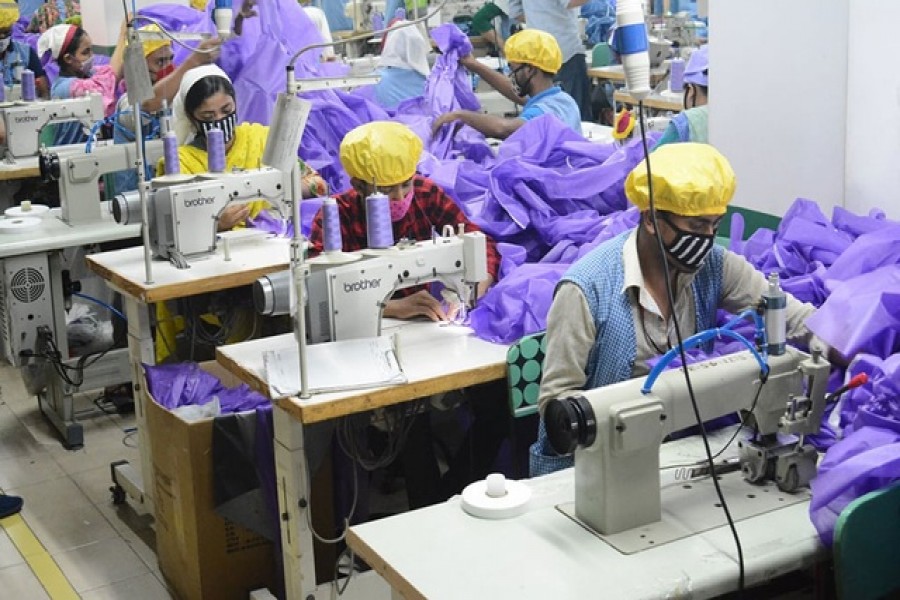Things have taken a turn for the worse for the biggest export basket, the RMG sector since September last. The sector posted a 7.5 per cent negative growth last month compared to the same month last year. Going by newspaper reports, it is understood that the sector has earned $1.77 billion, which is 19 per cent less than that of the same period in 2021. Indeed, industry leaders say that this negative growth is likely to continue for the next few months. At a time when the economy is already battling with a downward inflow of remittances through formal channels and increasing foreign exchange payments for fossil fuel imports, a fall in exports spells trouble for the economy at large.
To a large extent, the slowdown is due to lower demand in export markets where consumers in our traditional export markets, namely the European Union and the United States are battling unheard of inflation and general economic downturn. With the Russo-Ukrainian war showing no sign of coming to an end, it is difficult to imagine the scenario will change for the better soon.
RMG sector contributes not only 80 per cent of the total export earnings but is also the single largest employer. When economists reckon that the present dismal outlook in apparel exports may well continue till February next, there is cause for concern. BGMEA sources have already stated that most factories are operating at 30 per cent capacity compared to the preceding quarter. The unavailability of gas and erratic power supply has also not helped matters.
The fact that Western retailers are stuck with large stockpiles of apparels as the consumer demand for such products has declined against the backdrop of galloping inflation in the West, it is time to face up to the realities. With falling production and reduced orders, it is only a matter of time before factories opt for cost cutting measures - the first of which will be layoffs. Entrepreneurs have sought policy support measures from the government to weather this rough patch.
Whether the national board of revenue will entertain the BGMEA's appeal to bring down existing 1.0 per cent source tax on garments exports to 0.5 per cent is a matter of debate. While exports are down, it has not reached a stage where the industry as a whole is threatened. Bangladesh produces largely basic items of clothing, which according to the BGMEA will not face a major drop in demand in the long run from the markets the country caters to.
In the US, inflation-weary shoppers have been skimping on clothing purchases, prompting retailers to slash prices to clear inventory off the racks, according to Reuters. Major clothing brands like Gap reported a slump of about 8.0 per cent from a year back. US giants like Walmart and Target have offered deep discounts and rollback on clothing. All this points foreign retailers' attempt to attract the curtailed budgets of shoppers who are looking for cheaper deals as there is less money to go around for brand clothes.
With European buyers shying away from buying the way they used to, it is time to step up the search for new markets like China, the Far East and the Middle East. Interestingly, neighbouring India is signing Free Trade Agreements with the Middle East and Australia. There is a big role for the government to step up search for such opportunities in non-traditional markets so that export diversification can take place and the industry is given a way out of the morass it finds itself in now.


